Aquarium of the Pacific: Blue Hope
- Sustainable Development
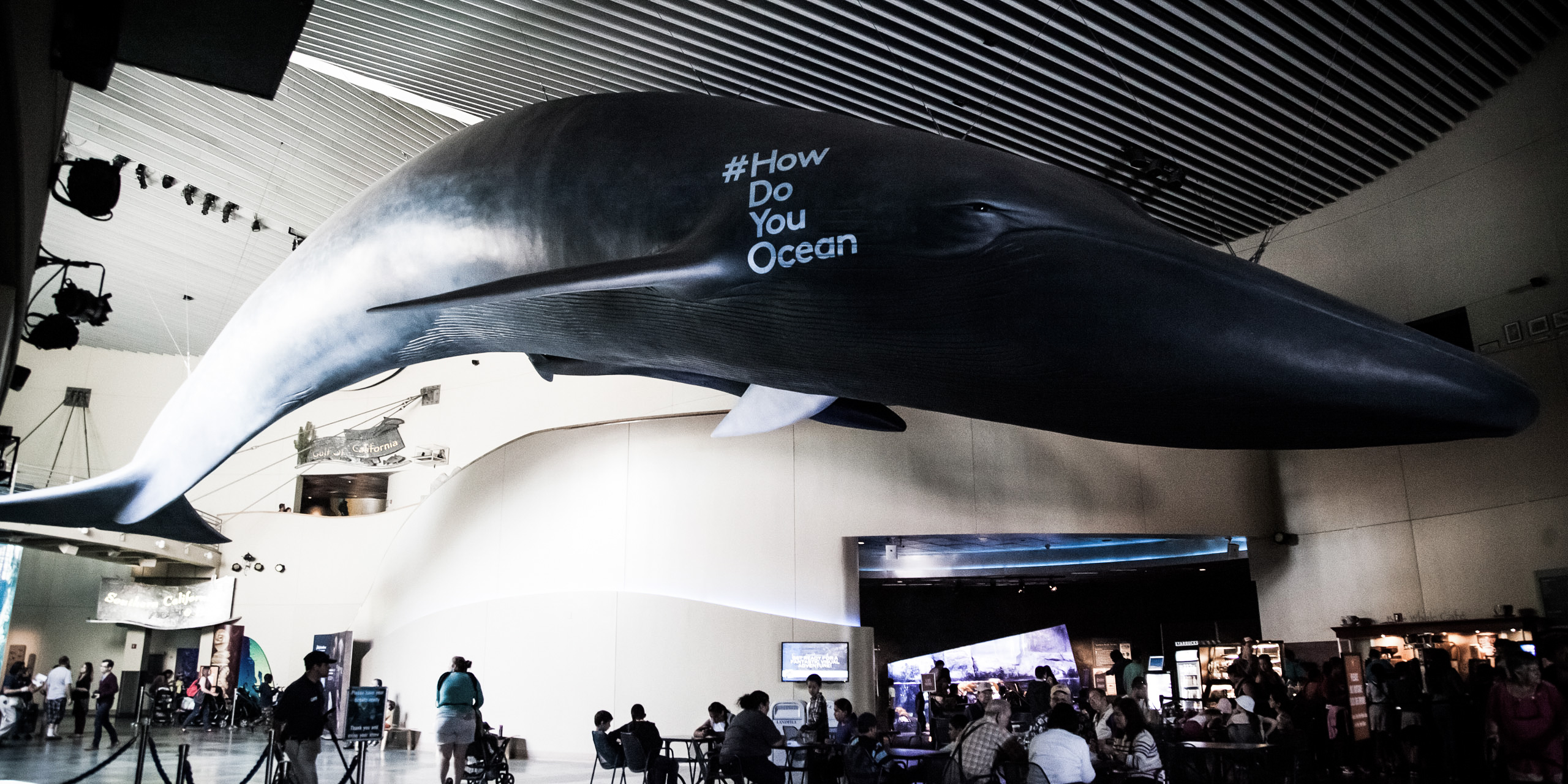
Spring 2016
Students in this Spring 2016 Designmatters studio “Blue Hope” targeted ways they could integrate art with science to create engaging interactive exhibits for visitors of the Aquarium of the Pacific in Long Beach that would stress the urgency of marine defaunation and possible mass extinction of ocean life while encouraging behavior that could mitigate and reverse this potential ecological collapse
Project Overview
Transdisciplinary students worked in teams to create interactive exhibit items and platforms that could be implemented onsite in a new exhibition at the Aquarium of the Pacific, Vanishing Animals.
Marine defaunation – animal loss in the global ocean – is a complex issue; the challenge was to create exhibits that would present the science in relatable terms without sacrificing the facts, and explain succinctly what extinction truly means, ultimately creating calls for urgent action to counter this potential collapse.
To better understand marine defaunation and human impact on both terrestrial and marine life, students were required to read a study published in the January 2015 edition of Science Magazine (Marine defaunation: Animal Loss in the Global Ocean). This paper delivered hard, scientific data that was meant to be translated by students into accessible and engaging information for Aquarium-goers.
Students had access to the aquarium grounds and personnel as they observed aquarium visitors’ behavior patterns, gathered and analyzed scientific data for ideation, distilling the raw information into an engaging presentation that would be accessible to a wide range of users.
In addition, guest speakers helped inform students by providing insights and experience: Douglas McCauley, Assistant Professor in the Department of Ecology Evolution and Marine Biology at UC Santa Barbara, presented scientific facts behind the research on marine defaunation; and Dr. Lucy Jones, Former Science Advisor for Risk Reduction at the US Geological Survey discussed methods on telling effective stories using scientific data.
“We are a strong believer in the integration of the arts and the sciences. Not just the natural sciences, but the social sciences and all the arts. This partnership we have had with ArtCenter has grown and will continue to grow. This particular project has students from across numerous departments — more than we have ever seen before — that impresses me the most with this group. The level of execution is always great, and this time we have had more perspectives.”
– Jerry Schubel, CEO and president, Aquarium of the Pacific
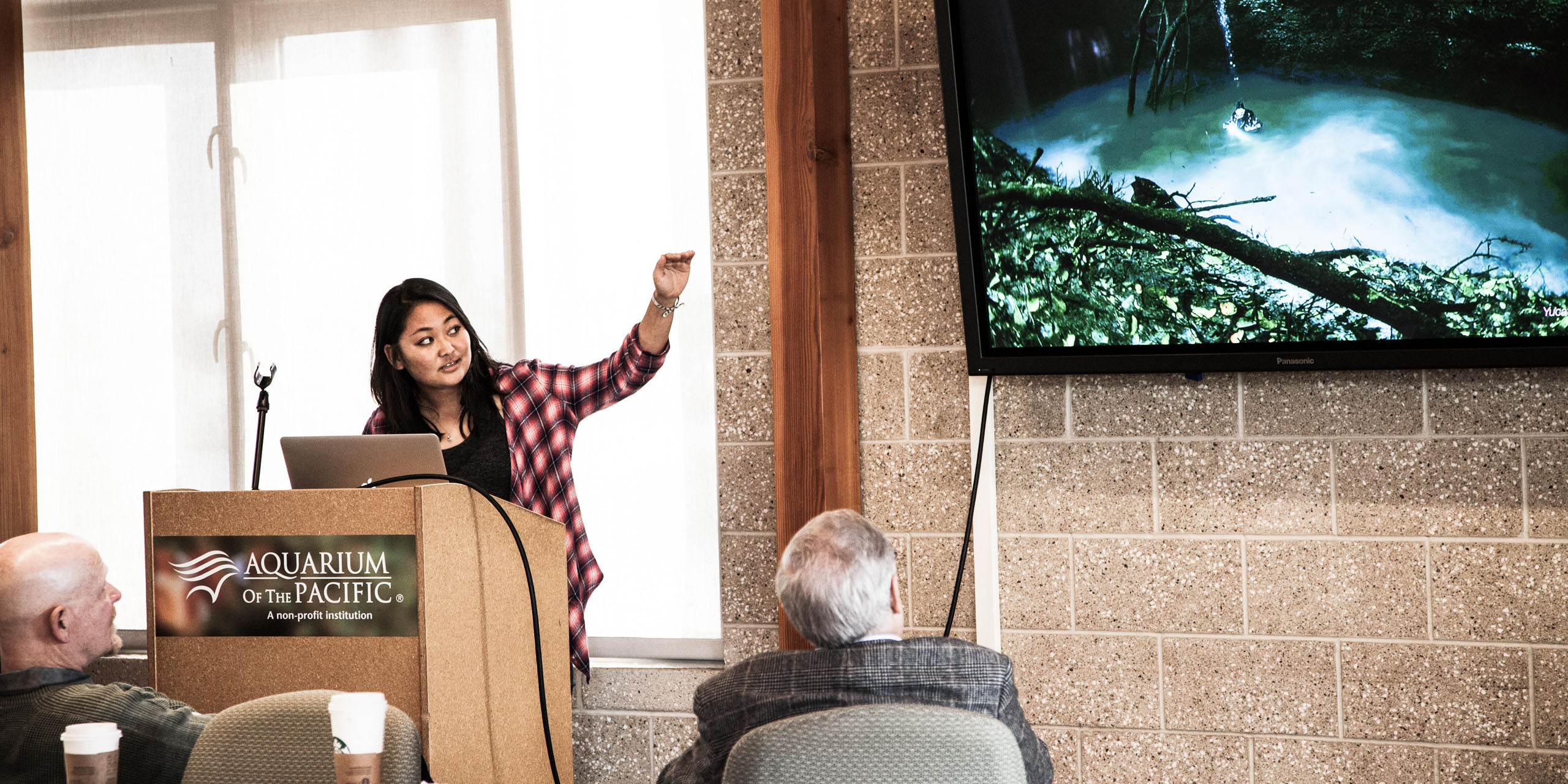
Background
As long as humans have been a force on the planet, they have altered their environment for survival, changing, using and even depleting resources throughout mankind’s evolution from hunter/gatherers to urban dwellers. Landscapes have been changed as well as the wildlife that inhabits those environments. In the last 500 years, 500 species of land animals have gone extinct, while there have only been 15 recorded marine extinctions.
The main author of a recent research paper on marine conservation, Douglas J. McCauley, Assistant Professor of Ecology, Evolution and Marine Biology at UC Santa Barbara, compares terrestrial and marine defaunation and outlines how wildlife populations have been badly damaged by human activities throughout time. As technology improved human hunting tools, as well as shelter and transportation systems, animal species have been adversely affected through habitat loss, pollution and other factors.
Marine life is in a relatively better condition that animal life on land; however, as humans with improved technologies turn to the oceans for food, energy sources and raw materials, there could be a potential mass marine life extinction in the coming years. Currently, coral reefs are dying, overfishing is problematic, plastic waste is abundant and oceanic ‘dead zones’ have been created by runoffs in agricultural fertilizers.
McCauley’s visual timeline of the ecological devastation on land and sea documents the alarming rate of extinction for land animals which could be replicated for marine life by humans who are quickly changing aquatic environments.
Lessons learned in land development and use throughout history can be the impetus for discovering intelligent and viable ways for managing growth of human interaction in marine environments. The challenge is not to stop ocean exploitation, but to use the resources of the ocean in a responsible way that will protect and sustain marine life.
About the Aquarium of the Pacific
With a mission to instill a sense of wonder, respect and stewardship for the ocean and ocean life, the Long Beach Aquarium of the Pacific was founded in 1998 and is the fourth most-attended aquarium in the nation. It displays more than 11,000 animals in more than 50 exhibits that represent the diversity of the Pacific Ocean.
Each year, the aquarium welcomes 1.6 million visitors who enjoy and learn about marine life both onsite and through virtual experiences.
The aquarium openly embraces the latest scientific research to present important topics and issues facing the planet and ocean life through its exhibitions, educational programs, hands-on activities and lectures from leading scientists from around the world.
“The integration of digital media into destinations like aquariums where there are live animals, the dominant experience, has been a struggle for institutions for a long time. What these students have done is much more refreshing and much more in tune with how people interact with media these days. The students built on the behavior that visitors are already doing, already comfortable with, rather than demand that users learn an operating style.”
– Tom Bowman, Bowman Design Group, Consultant Aquarium of the Pacific
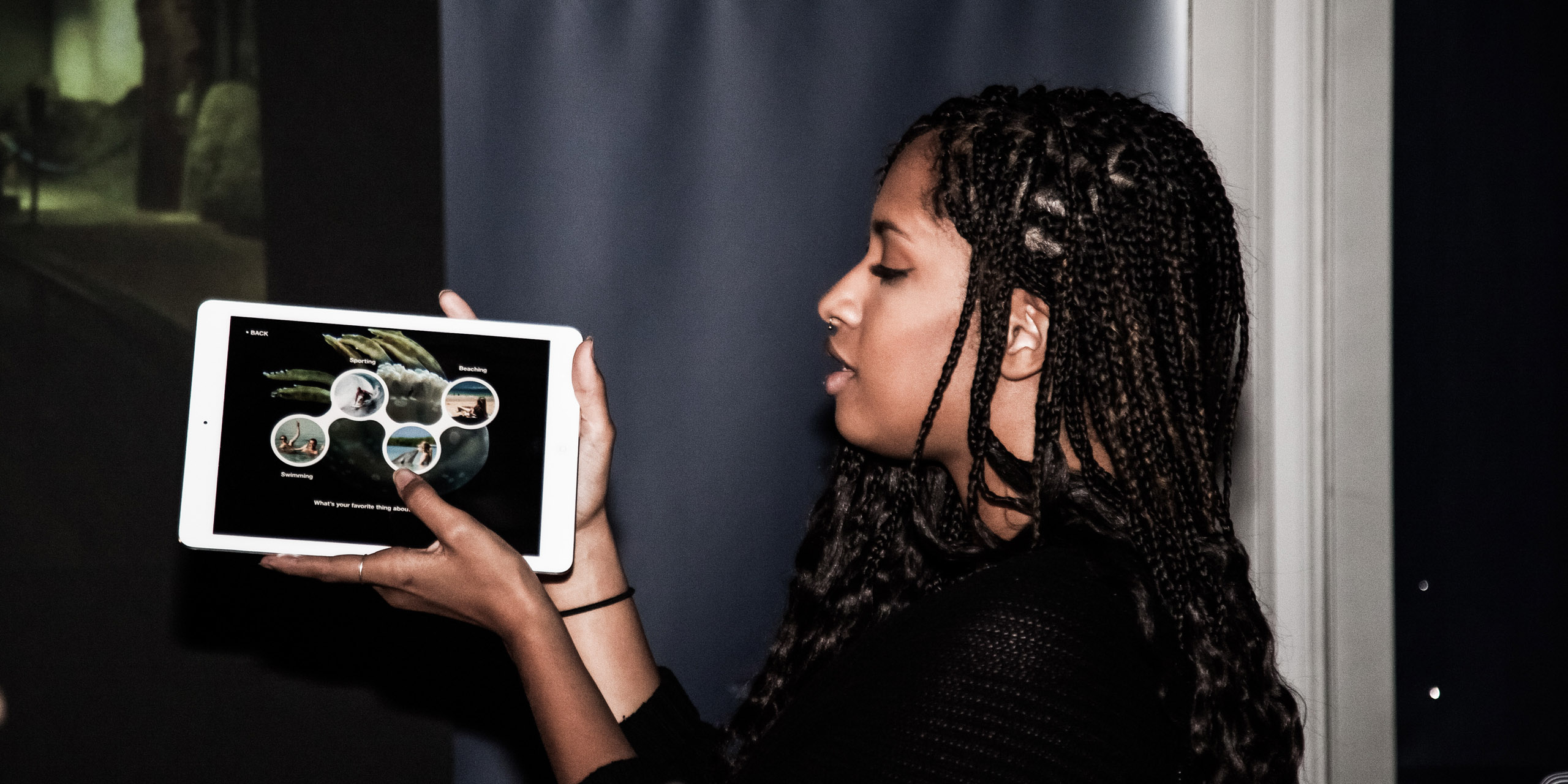
Research and Project Development
Aquarium visitors come mainly for fun and enjoyment, so presenting dense and heavy topics such as marine defaunation is a challenge. Tapping into human’s natural curiosity and allowing guests to take on the role of scientist is an effective way to engage guests and to explore difficult but important issues.
For this class, research was multi-layered. First, students gathered information about how audiences respond and participate with interactive displays. Students also needed to incorporate scientific data into their ideation; McCauley presented a brief overview of his findings and research which gave the students a foundation for ideas and a jumping off point for new explorations as they collected and examined other scientific papers on extinction and marine defaunation.
Additionally, Dr. Lucy Jones, Former Science Advisor for Risk Reduction at the US Geological Survey, ran a mini-workshop session on the challenges of science communication and how to effectively use science in storytelling. Jones explained that science works in the details and advocated that students use consistent messaging and visual reinforcement; encourage discussion about the topic; and create a consensus on the findings. Even when there is depressing information, offer reasons to not give up and ways to act.
Students distilled information and ideation into their prototypes, choosing interfaces and creating experiences that would get the message across simply but effectively while presenting engaging and rewarding moments.
At the mid-term presentation, Aquarium of the Pacific President and CEO Jerry Schubel, along with Tom Bowman, a consultant who often works with the aquarium on exhibition design, gave candid feedback on student projects explaining the pros and cons to each team, and offering insights and suggestions for refining their exhibits.
“There’s a saying that goes, ‘Just because it’s legible doesn’t mean it communicates well.’ We were really trying to pay attention to the behavior of people, especially in a place such as an aquarium where there are live animals and a lot to pay attention to. We didn’t want to compete with that but embrace that as part of our design. So we decided to use social media because we saw people coming in and using their phones, doing what they normally do. We decided to connect that behavior with how they could connect to the oceans.”
– Jesus Acova, Student, Graphic Design
Project Outcomes
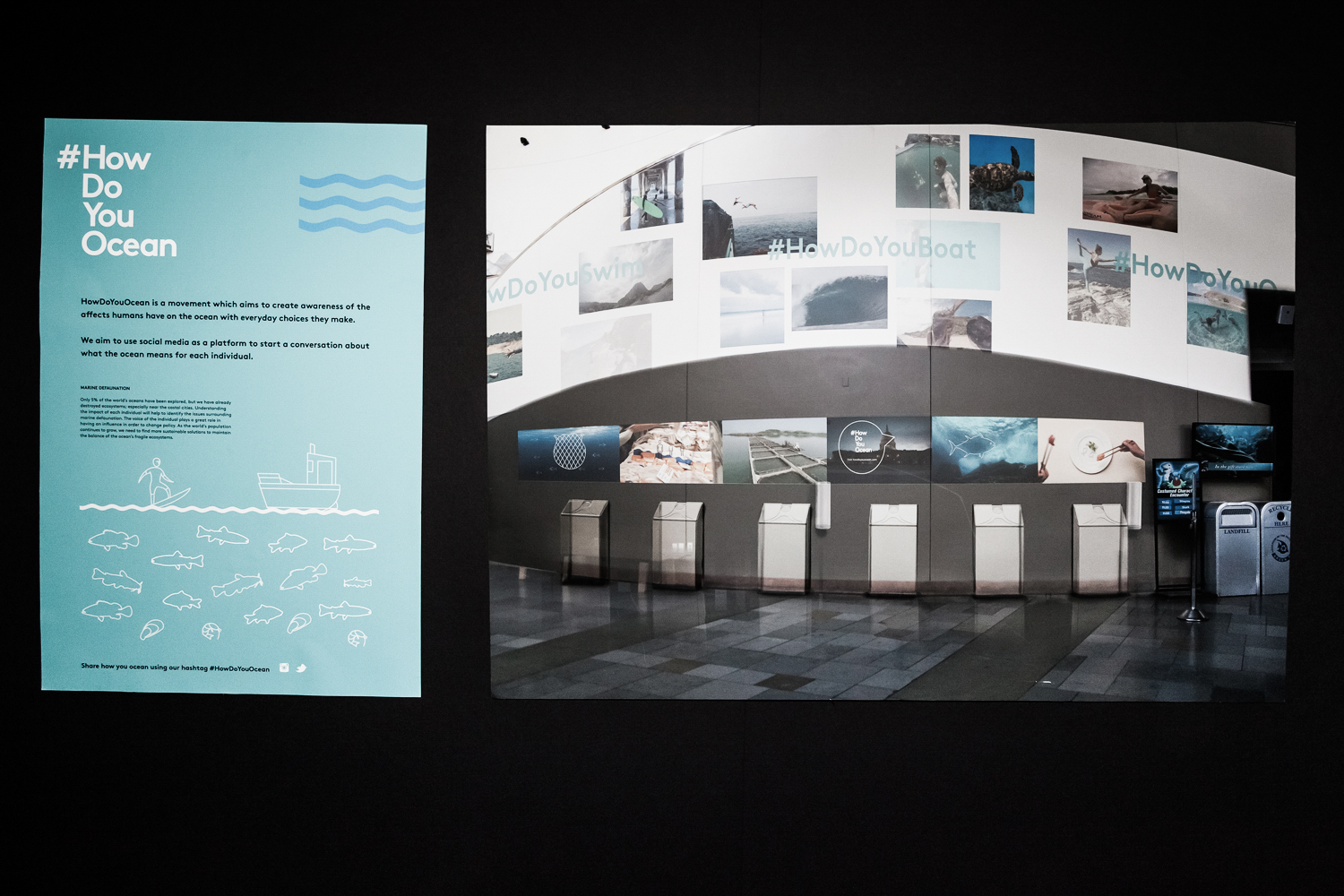 close
close
How Do You Ocean? -- Interactive website/social movement
Read moreEsteban Cardona Jimenez, Vincent Zhang, Mariko Sanchez, Jesus Jacobo
This social movement taps into visitors’ natural love of the ocean which can lead to a desire to save it. In the exhibit space, images of cheery ocean activities are projected on the wall along with live feed photos from the How Do You Ocean? website and hashtag #HowDoYouOcean? Visitors then choose their favorite ocean-related activity by placing a token into a box which triggers the video screen to change. Choosing sushi, the screen presents snippets about problems associated with overfishing followed by an invite to visit the website for more details and how to lessen their impact. Around the aquarium, Lucite #HowDoYouOcean? signage is placed in highly trafficked areas to increase the slogan’s visibility.
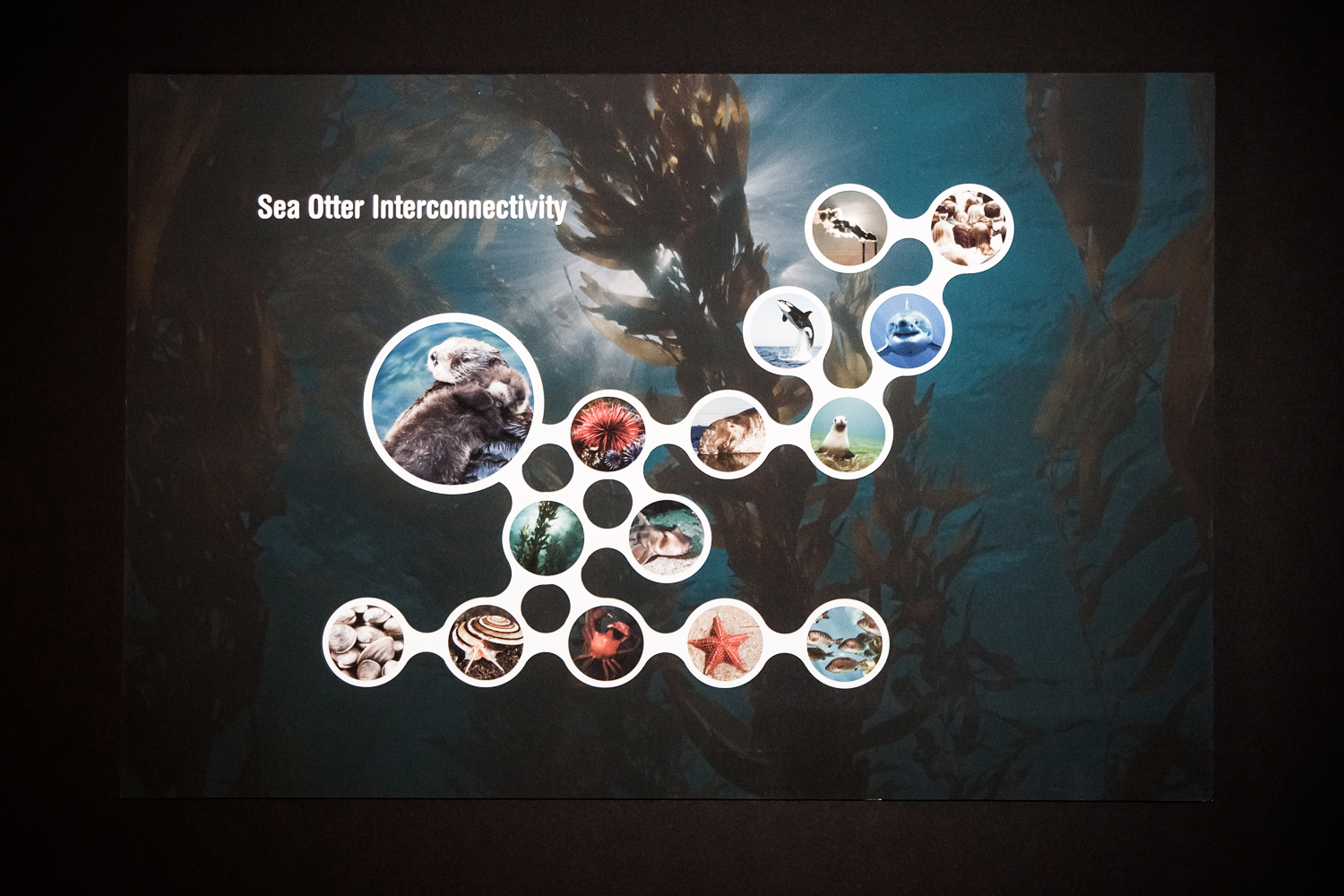 close
close
Marine Explorers – Marine characters/interactive iPads
Read moreKelly Weldon, Melissa Gima, Juan Andres Helt and Lori Nishikawa
To help visitors personalize their exploration of the fauna of the aquarium and to establish an understanding of the importance of interconnections between ecosystems, this methodology begins either online or at a kiosk where visitors answer a series of questions and are assigned their own animal avatar (shark, manta ray, otter or penguin) and given a lanyard with that character. As they travel through the aquarium, visitors approach an iPad kiosk and, using their lanyard (fashioned with an IFP chip) will switch screens to give quick facts about how their animal relates to the exhibit in front of them. Screens will feature little text and stress visual imagery and connections.
 close
close
Modern Day God – Video game
Read moreCindy Hu, Aska Cheung, Natalie Galdamez
This interactive video game allows users to see the consequences of development on ocean animals based on choices. The goal of the game is to save sea turtles that are swimming ashore to lay eggs. Once a player has selected an island, s/he is given two options on where to build certain structures: dock, building, factory or cabin. Once the location of the structure has been selected, the player will see how turtles react to the new item in their environment. Even though the game is for one player, the large screen allows for multiple viewers to watch and offer suggestions.
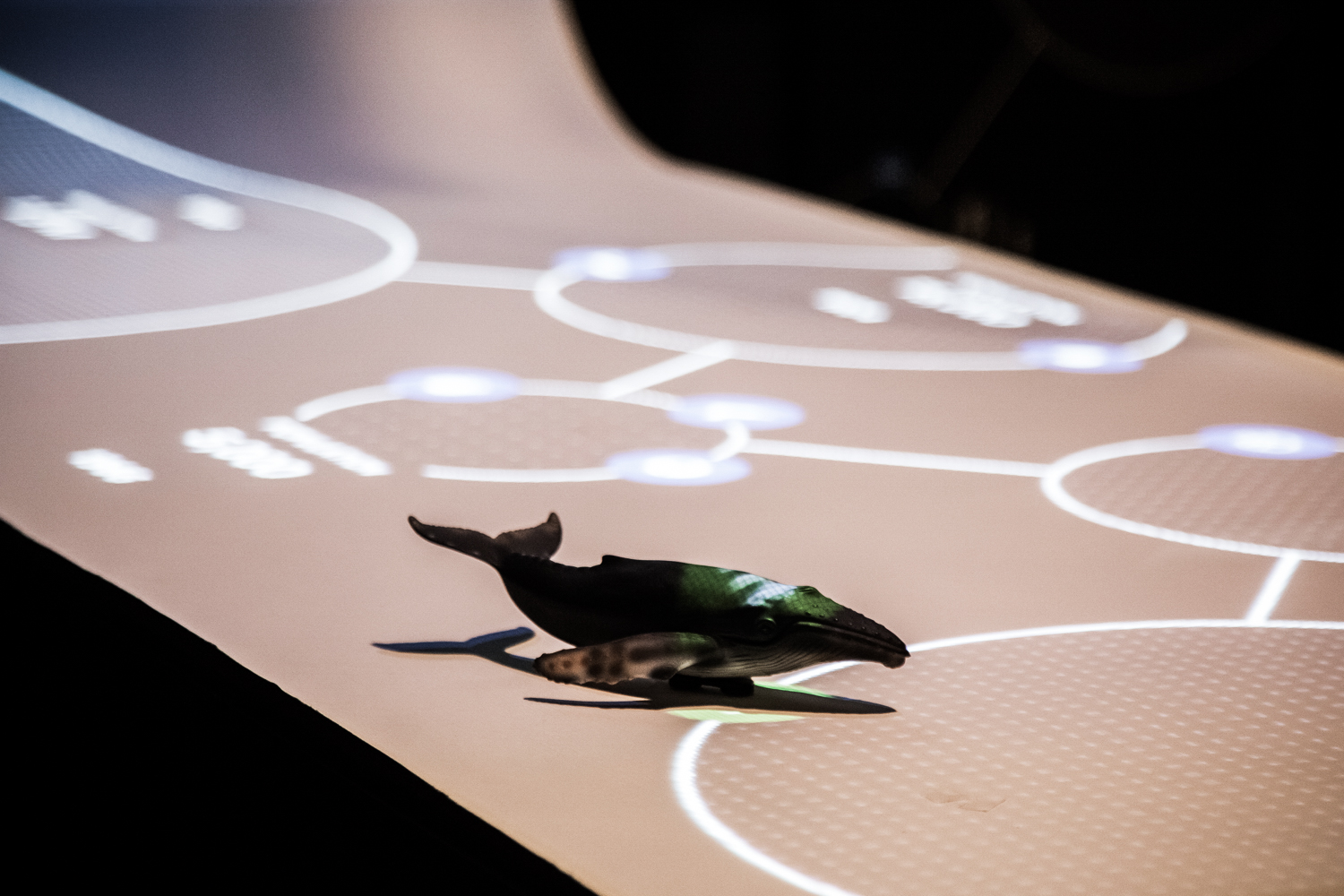 close
close
Odyssey - Interactive table
Read moreMatt Benkert, Naomi Tirronen, Linh Ho
This hands-on table invites guests to discover histories about certain marine animals, especially ones close to extinction and others facing extinction because of human involvement. A vertical screen shows quick, engaging videos of the animals. When users place a toy animal on a hot spot, the horizontal table becomes a screen, showing the animal’s population at a certain historical time. The vertical monitor describes historical facts in short sentences and interesting images about how humans interacted with that animal. Placing the toy animal in another spot moves the history of that animal forward and produces new videos and facts that are either quick videos or eye-catching illustrations.
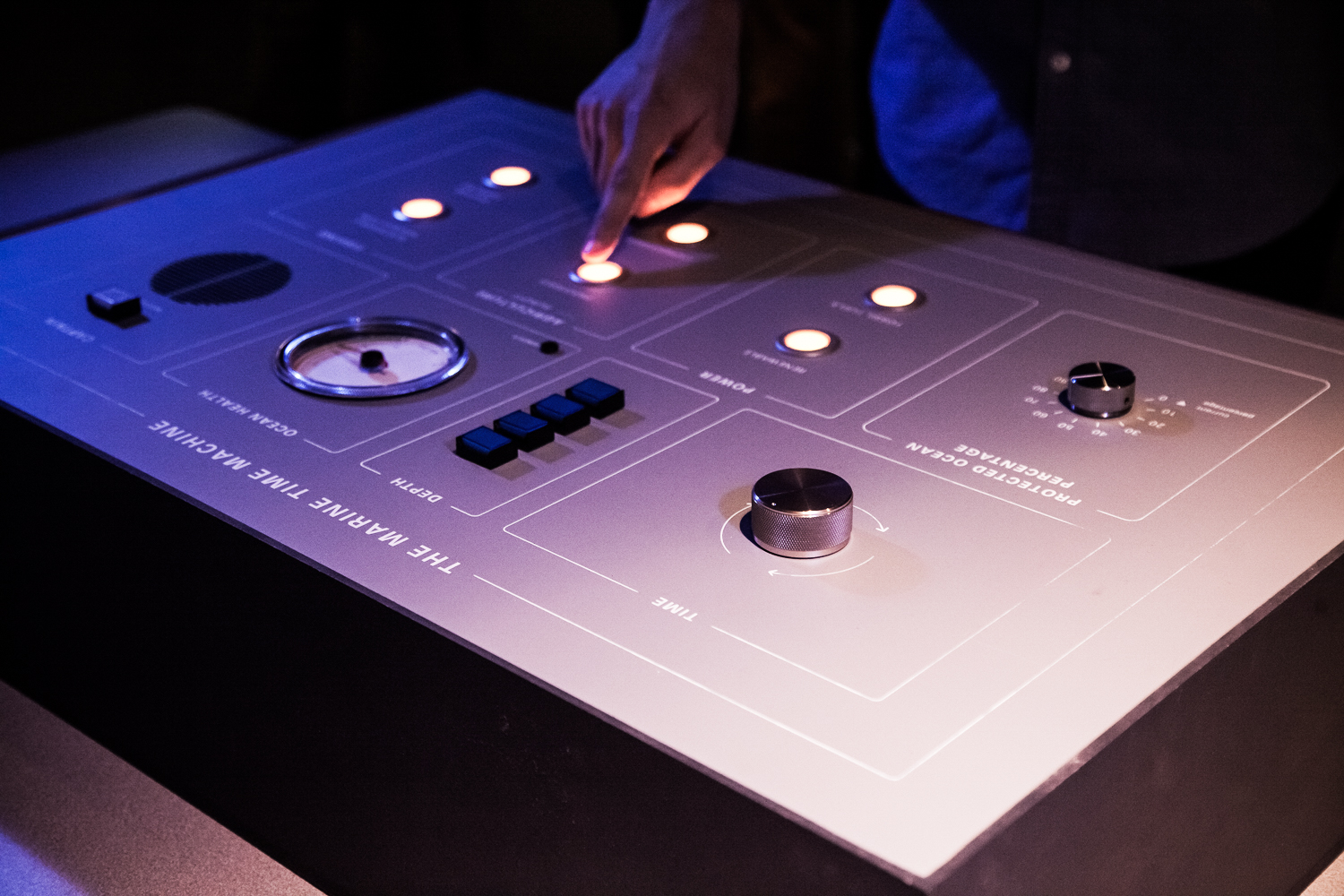 close
close
Submarine Time Machine -- Interactive console
Read moreStephanie Contreras, Chase and William Van Skaik
A control board with buttons and options puts users in the seat of a hypothetical time-traveling submarine that can show images of possible futures determined by choices made at the control. A captain’s voice encourages the user to choose between options that can positively or negatively affect the ocean; for example under Power Choices, selections are Renewables or Fossil Fuels. When adverse choices are made, the screen depicts a polluted ocean scene with few animals or living things. The captain’s voice offers facts about that choice. Users can navigate their sub near the top or on the bottom of the ocean for different scenarios.